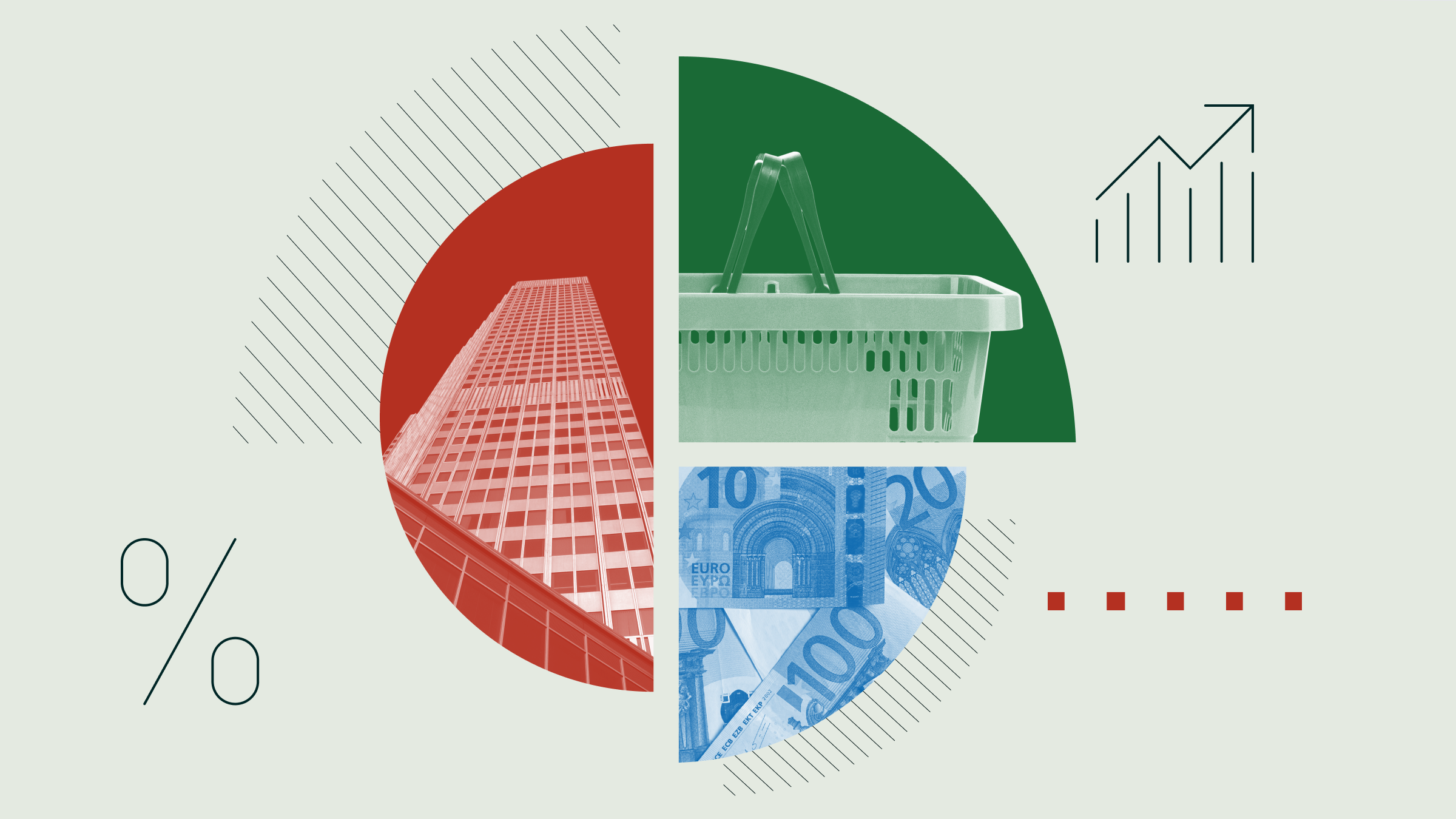In the previous lesson, we reviewed the different types of defences (economic moats) and offered examples of wide-moat firms. Understanding moats, and determining whether or not a firm has a moat is a tricky process. In this lesson we'll examine the mental model that underpins our moat framework and explore some of the nuances of wide moats, narrow moats, and deep moats.
Porter’s five forces
Michael E. Porter's Competitive Strategy, originally published in 1980,
is a definitive work on industry competition. In the book, the Harvard
professor provides a framework for understanding competitor behaviour
and a firm's strategic positioning in its industry. Much of Porter's
framework should be familiar as it underpins our thinking about economic
moats.
In essence, Porter provided a framework of five forces that can be used to understand an industry's structure. Since firms strive for competitive advantage, the first four forces at work help to assess the fifth, an industry's level of rivalry:
1. Barriers to entry: How easy is it for new firms to start competing in a market? Higher barriers are better.
2. Buyer (customer) power: Similar to switching costs, what keeps customers locked in or causes them to jump ship if prices were to increase? Lower power is better.
3. Supplier power: How well can a company control the costs of its goods and services? Lower power is better.
4. Threat of substitutes: A company may be the best widget maker, but what if widgets will soon become obsolete? Also, are there cheaper or better alternatives?
5. Degree of rivalry: Including the four factors above, just how competitive is a company's industry? Are companies beating one another bloody over every last dollar? How often are moats trying to be breached and profits being stolen away?
Porter's five forces considered together can help you to determine whether a firm has an economic moat. The framework is particularly useful for examining a firm's external competitive environment. After all, if a company's competitors are weak, it may not take much of a moat to keep them at bay. Likewise, if a company is in a cutthroat industry, it may require a much wider moat to defend its profits.
A five forces example: Consumer products
The five forces concept is perhaps best explained through example.
(Porter's work is nothing short of excellent, but it is a heavy read.)
Let's briefly examine the household consumer-products industry by
considering rival US firms Clorox, Kimberly-Clark, Colgate-Palmolive,
and Procter & Gamble in terms of Porter's five forces:
Buyer power: Consumer-products companies face weak buyer power because customers are fragmented and have little influence on price or product. But if we consider the buyers of consumer products to be retailers rather than individuals, then these firms face very strong buyer power. Retailers are able to negotiate for pricing with companies like Clorox because they purchase and sell so much of Clorox's products. Verdict: Strong buyer power from retailers.
Supplier power: More than likely, consumer-products companies face some amount of supplier power simply because of the costs they incur when switching suppliers. On the other hand, suppliers that do a large amount of business with these companies--supplying Kimberly-Clark with raw materials for its diapers, for instance--also are somewhat beholden to their customers, like Kimberly-Clark. Nevertheless, bargaining power for both the firms and their suppliers is probably limited. Verdict: Limited supplier power.
Threat of new entrants: Given the amount of capital investment needed to enter certain segments in household consumer products, such as manufacturing deodorants, we suspect the threat of new entrants is fairly low in the industry. In some segments within the household consumer-products industry, this may not be the case since a small manufacturer could develop a superior product, such as a detergent, and compete with Procter & Gamble. The test is whether the small manufacturer can get its products on the shelves of the same retailers as its much larger rivals. Verdict: Low threat of new entrants.
Threat of substitutes: Within the consumer-products industry, brands succeed in helping to build a competitive advantage, but even the pricing power of brands can be eroded with substitutes such as store-branded private-label offerings. In fact, some of these same store-brand private-label products are manufactured by the large consumer-products firms. The firms believe that if they can manufacture and package a lower-price alternative themselves, they would rather accept the marginal revenue from their lower-priced items than risk completely losing the sale to a private-label competitor. Verdict: High threat of substitutes.
Degree of rivalry: Consumers in this category enjoy a multitude of choices for everything from cleaning products to bath washes. While many consumers prefer certain brands, switching costs in this industry are quite low. It does not cost anything for a consumer to buy one brand of shampoo instead of another. This, along with a variety of other factors, including the forces we've already examined, makes the industry quite competitive. Verdict: High degree of rivalry.
Examining an industry through the framework of Porter's five forces helps illustrate the different dynamics at work. It's not always clear-cut, either, so one wouldn't expect all of the firms in this industry to fall into one big bucket labeled wide moat or narrow moat. Instead, there are firms with distinct, long-term advantages and wide moats, like Procter & Gamble and Colgate, while others have advantages that we think may be less sustainable, such as Clorox and Kimberly-Clark.
Getting back to moats
Porter's framework makes scouring an industry for great investment ideas
much easier. Understanding an industry helps us find the great
businesses with economic moats that will withstand the inevitable
economic, competitive, and random other challenges that often cripple
weaker businesses.
Once we have a collection of great businesses from which to choose, finding those that meet our criteria and deliver above-average returns on invested capital over the long term becomes even easier.
Generally speaking, we believe investors should steer clear of companies that have no moat (those with a Morningstar moat rating of "none") because they have very few, if any, competitive advantages and can't keep rivals from eating away at their profits. (Lots of these companies don't even have any profits.) More than likely, we wouldn't want to hold a no-moat company for the long haul, so we probably wouldn't buy stock in one of these firms to begin with.
Some people are shrewd enough to buy no-moat stocks on a dip, hold them for a short term, and make a profit. As long-term investors this isn't a game we like to play. We think the rewards are far better, and the risks much lower, for those who spend a little effort to find strong companies to hold for a long time.
Types of narrow moats
There are certainly gradations of moat width, and we here at Morningstar
describe companies with milder competitive advantages as having "narrow"
moats. From our point of view, far more companies have narrow moats than
wide ones. Narrow-moat firms are, on average, of a much higher quality
than no-moat companies. Generally, narrow-moat companies generate lower
returns on invested capital than wide-moat companies but still have
returns slightly above their cost of capital. (We will talk about return
on invested capital and cost of capital extensively in coming lessons.)
Narrow-moat companies typically come in two varieties:
Firms with eroding moats: These companies have competitive advantages, but they are eroding due to a shifting industry landscape. This scenario is faced by some of the consumer-products companies, like those we just examined. For example, we consider both General Mills and Kellogg to be narrow-moat firms. The pricing power they once enjoyed is eroding as a result of increased competition and an ever-consolidating retail landscape that is increasing buyer power. The Baby Bells, such as AT&T and Verizon, are another example; their economic moats are also slowly eroding. In future years, they won't enjoy the monopoly pricing power they once did because of the increased use of wireless phones and, of course, the Internet.
Firms with structural industry challenges: A company in this category dominates its peers, but resides in an industry where wide moats are nearly impossible to create. For example, Waste Management has a solid position in the waste services industry. The trash taker is the largest operator of landfills in the country, a position that is nearly impossible to replicate due to political and citizens' group opposition. Such barriers to entry in waste disposal are augmented by regional scale and route density on the collection side of its business, which makes life difficult for local independent haulers. This competitive position allows it to garner real pricing increases, which help to mitigate rising diesel fuel prices and cyclical declines in waste volume.
Wide moats
All things equal, we'd choose a wide-moat company over one with a
narrow-moat rating for the significant competitive advantages that
should enable the wide-moat firm to earn more than its cost of capital
for many years to come.
Most wide-moat companies have some sort of structural advantage over competitors. By "structural," we mean a fundamental advantage in the company's business model that wouldn't go away even if the current management team did. With a structural advantage, a company isn't dependent on having a great management team to remain profitable. To paraphrase Peter Lynch, these are companies that could turn a profit even with a monkey running them, and it's a good thing, because at some point that may happen.
We hate to sound like a broken record here, but the four types of moats that we identified in the previous lesson are incredibly useful when thinking about structural advantages a company may or may not possess. Keep the four types of moats in mind:
1. Low-Cost Producer or Economies of Scale
2. High Switching Costs
3. Network Effect
4. Intangible Assets
Wide moats versus deep moats
With the concept of a wide moat firmly in place, it's also important to realise that the width of a firm's moat, or how broad and numerous its competitive advantages are, matters more than the moat's depth, or how impressive any individual advantage is. Discerning between width and depth can be difficult, however.
First, it's absolutely critical to understand not only what an economic moat is, but also how it translates to above-average returns on capital. Many investors easily surmise the first point about moats--that a competitive advantage is required--but they miss the importance of the second point, above-average returns. If the business doesn't throw off attractive returns, then who cares if it has a competitive advantage? Autos and airlines are two businesses with some barriers to entry, but few new competitors are trying to crash the party in a race for single-digit return of equities (ROEs) or bankruptcy.
Over the years, Warren Buffett has frequently referred to his desire to widen the moats of his companies, but it's rare to see him refer to a moat's depth. Buffett's frequent talk of moat width--and silence on moat depth--speaks volumes. Michael E. Porter has said, "Positions built on systems of activities are far more sustainable than those built on individual activities."
Unfortunately, no company is going to tell you if it has a moat, much less whether that moat is of the wide or deep variety. If a firm has a competitive advantage, it behooves it to not tell you how its moat has been built. After all, you just might emulate it.
Still, it can be worth investors' time to ponder whether the stocks they're invested in have one really fantastic competitive advantage that, while deep, may lack width, or if they're invested in firms with a series of advantages that can sustain above-average returns on capital over the long haul.
Consider a well-run giant conglomerate such as General Electric. Finance theory tells us that a decades-old firm should have seen its returns on capital dribble down to its cost of capital ages ago due to rivals competing away the excess returns. Yet, experience proves different.
Why haven't competitors captured these profits? Quite simply, this firm is pretty good at an awful lot of things. At GE, if new competition from cable hurts the NBC network or its insurance division posts lacklustre returns, it can rely on a cadre of numerous other good businesses to pick up the slack. Like stacked plywood, each of these businesses is strong in its own right, but virtually indestructible together.
The bottom line
This and the preceding lesson have covered a lot of material about moats
and the qualitative aspects of a company's positioning. Though this step
in identifying attractive companies for investment is an important one,
it is only the first step. In coming lessons in this book, we will show
you how to quantitatively confirm that a company has a moat, as well as
show you how to value stocks so that you don't blindly pay too much for
a quality company.
















